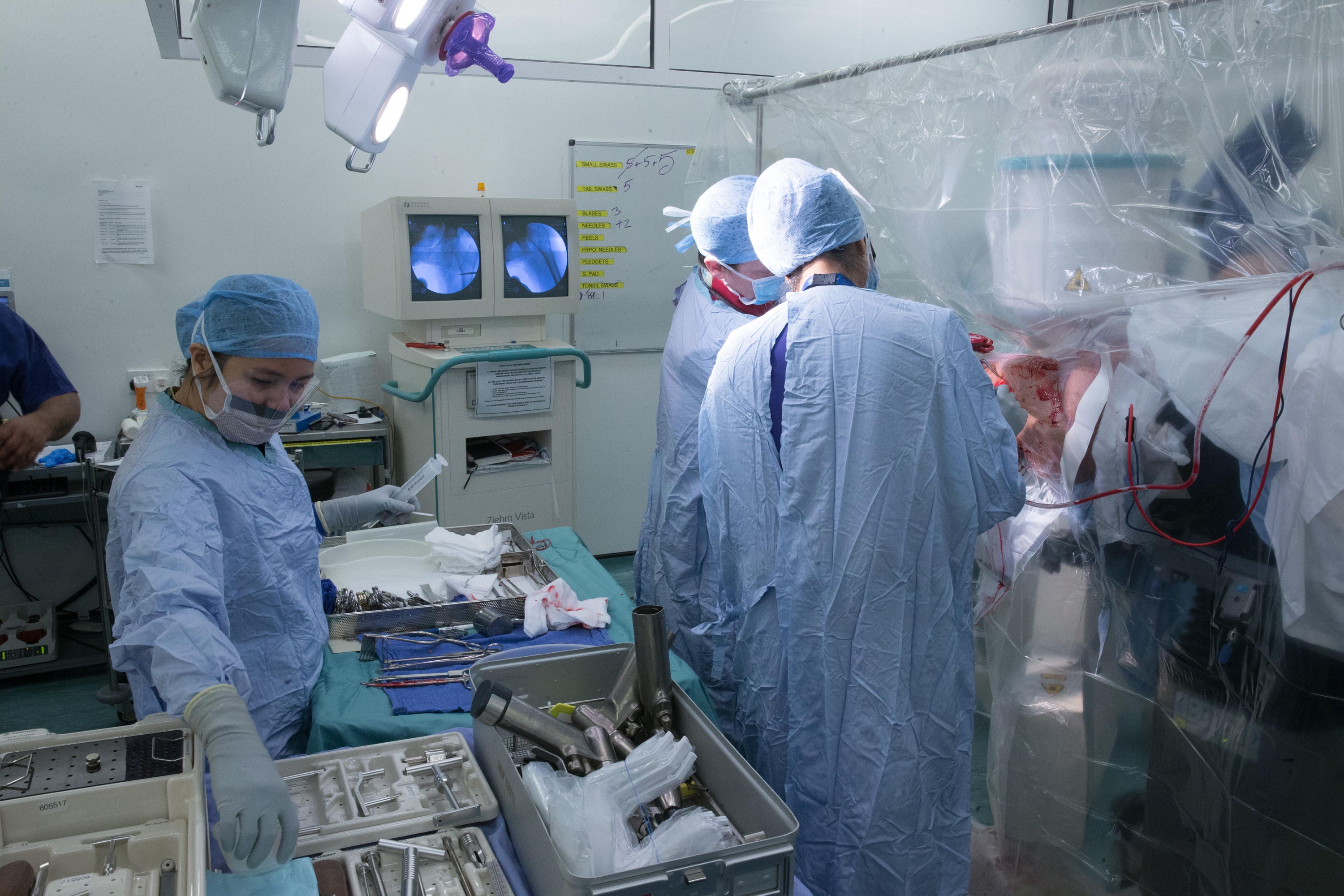What are microplastics and how are they affecting us? As study finds particles in operating theatres
Microplastics have already been found in the food chain and human blood. By Katie Wright.

Your support helps us to tell the story
From reproductive rights to climate change to Big Tech, The Independent is on the ground when the story is developing. Whether it's investigating the financials of Elon Musk's pro-Trump PAC or producing our latest documentary, 'The A Word', which shines a light on the American women fighting for reproductive rights, we know how important it is to parse out the facts from the messaging.
At such a critical moment in US history, we need reporters on the ground. Your donation allows us to keep sending journalists to speak to both sides of the story.
The Independent is trusted by Americans across the entire political spectrum. And unlike many other quality news outlets, we choose not to lock Americans out of our reporting and analysis with paywalls. We believe quality journalism should be available to everyone, paid for by those who can afford it.
Your support makes all the difference.Levels of microplastics in hospital operating theatres are almost three times higher than in our homes, research has found.
The University of Hull study discovered an average of 5,000 microplastics per square metre when the cardiothoracic theatre was in use – which researchers say reveals another route via which the particles can enter the human body.
Jeanette Rotchell, professor of environmental toxicology at the university, said the types of particles found in the study relate to items commonly used during operations, such as blister packs, surgical gowns and hairnets.
“These items are all wrapped in plastic and this is contributing to all those particles in the operating room,” she said. “It is a very dense environment for plastic particles to be introduced into the surrounding air.”
Lead investigator Daniel Field noted the invention of plastics was revolutionary for the surgical environment and vacuum packing equipment reduces risks to patients, but added: “The amount of plastic used in operating theatres across Europe is astoundingly high.”
What are microplastics?
Microplastics are extremely small particles – usually classed as less than 5mm in length – that fall into two categories: primary and secondary.
Primary microplastics are designed for commercial use, such as microbeads found in certain face scrubs, and have been banned in many countries, including the UK. Secondary microplastics are the particles that result from the breakdown of larger plastic products over time, such as plastic water bottles.
The impact of microplastics on the environment is well known, with vast quantities found floating in oceans, washed up on beaches and in the stomachs of marine and land animals.
In more recent years, several studies have also found evidence of microplastics entering the human body, with tests detecting particles in blood, placentas and breast milk.
The average person is said to ingest around 50,000 microplastic particles a year through food and drink, according to research published in the journal Environmental Science and Technology in 2019, with traces found in cow’s milk, vegetables and tap water.
Are microplastics dangerous to human health?
“This is an important area of research right now,” says Dr Lisa Baldini, Environmental Scientist at Teesside University (tees.ac.uk).
More research is needed in order to understand the impact microplastics might be having on our health. However, it is a topic that raises concerns for many experts.
The risk may vary according to the type of material, as plastics undergo chemical treatments during manufacturing to give them the properties needed for a particular use, for example to make them soft or rigid.
“Chemicals called Bisphenols, for instance, bisphenol A (BPAs) are used in food and drinks packaging, as are chemicals called Phthalates,” Baldini explains. “These are both known to be hormone disruptors and may be linked to breast cancer, infertility and early puberty.”
Is there anything we can do to prevent ingesting microplastics?
The short answer is no, says Baldini: “Plastic clothing is a major source of plastic fibres to the environment, and these tend to be light and easily transported by air, which means that they are everywhere.”
To reduce levels of microplastics would require “a complete change” in materials used for thousands of everyday items, she continues.
“We need to move away from plastic as the go-to material for clothing, building equipment, instruments, packaging, etc to reduce the prevalence of microplastics in the environment.”
Reducing plastic at home
As Baldini says, there is an important bigger picture here.
However, if you’d like to attempt to reduce the amount of plastic in your home, there are swaps you could introduce.
“Choosing products packaged in glass can offer a tangible household solution to reduce exposure to potentially harmful chemicals caused by microplastics, as glass will not break down into the environment to cause microplastics,” says Nick Kirk, technical lead at British Glass (britglass.org.uk).
This is particularly important when it comes to using the microwave, as Kirk notes: “Plastic containers leach chemicals when they’re heated.”
Similarly, swap paper cups for metal or ceramic when drinking coffee or other hot drinks, he adds: “They have liners which release components of plastic into the drink when exposed to hot liquids.”